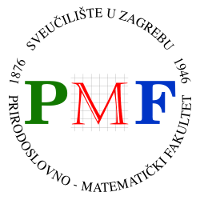Bioinformatics 2
Teacher: dr. Pavle Goldstein, assistant professor
Semester: second
ECTS: 6
Required course
- To further develop understanding – both practical and theoretical – of main bioinformatics methods, primarily sequence analysis,
- To introduce structure analysis and related topics; and to introduce various topics in machine learning in bioinformatics, through case studies and interaction with life-sciences researchers using bioinformatics methods.
After the completion of the course, it is expected that a student:
- will be able to apply mathematical results to problems in biological sequence analysis,
- will be familiar with techniques for protein analysis and classification,
- will be familiar with protein structure analysis techniques,
- will be familiar with main phylogenetic analysis techniques,
- will be familiar with the main machine learning methods in bioinformatics.
- modelling evolution of biological sequences – multiple sequence alignment; hidden Markov models for multiple sequence alignment and associated topics,
- protein structure analysis: protein fold, secondary structure elements, distance matrices; structure alignment,
- phylogenetic analysis – UPGMA and neighbour-joining algorithms,
- clustering and classification: k-means clustering, how many k in k-means; elements of machine learning for biological sequence classification – support vector machines.


